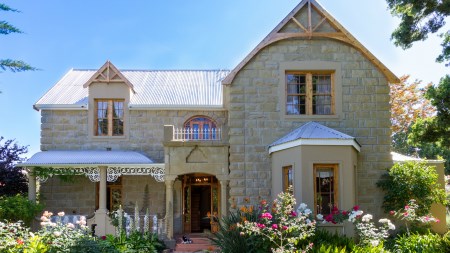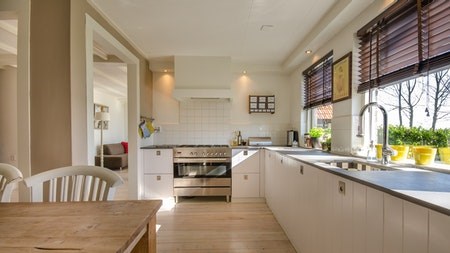Since March 2020, our lifestyles have required many significant adjustments as have the interior spaces that we inhabit, and 2021 was therefore a year of realignment during which a number of trends emerge to accommodate our new needs and priorities.
So says Yael Geffen, CEO of Lew Geffen Sotheby’s International Realty, adding that although many of these trends will remain for the foreseeable future, with restrictions now almost totally lifted, 2022 will hopefully also spark a return to familiarity along with a flurry of new ideas.
“Last year we saw a resurgence in semigration as many people now have the option to live where they want to rather than in close proximity to the office as well as shifts in buyer priorities after more than a year of lockdown.
“The new year is a great time to start afresh and those who haven’t yet made the necessary changes to help them adapt to their new lifestyles, should add ‘updating your home’ to the list just below ‘decluttering’.
Geffen believes that the following are the key trends that will shape how we live, work and play this year:
Multifunctional rather than open plan spaces
With hybrid and remote work continuing into 2022 and beyond, flexible live/work spaces that accommodate the needs of various generations under the same roof are paramount.
"It’s no longer enough that homes be the ideal places to live, they must also be places where people can work, their children can learn and, increasingly often, where multiple generations can live together.
“However, most people prefer not to be sequestered away all alone in individual rooms so instead of open plan design, think broken plan layouts that distinguish between living and working spaces and provide opportunities for both communal use and privacy.”
Dedicated rooms
However, with so much more being done at home these days, there is also a growing demand for dedicated rooms for specific functions.
“The home office has become indispensable and will remain high on homeowners' priorities, however, going forward, we will see rooms dedicated to specific purposes rise further up the wish list.
“We're starting to see gyms, spa bathrooms, meditation rooms wine rooms and even larger storage rooms make their way onto the list of must-haves and many new construction clients are requesting specialised spaces that minimise the need to leave home.”
Design that enhances wellbeing
Wellness continues to be in the forefront of our minds and, after living through a pandemic, is likely to remain there for years to come.
“After over a year of being shut inside, there has been has been and will continue to be a focus on regaining our connection to the natural world which we are already seeing in a number of ways.
“One of these is biophilic design principles with an emphasis on creating calming, well-ventilated plant-filled environments that establish a visual connection with nature.
“Natural materials and elements will also play a role, with the thoughtful incorporation of more organic materials and natural textures like wood, stone and ceramic, as well as earthy elements like plants, water and fire.
Reclaimed materials
Going green will extend further than the introduction of nature into our homes, with repurposing and re-use of materials likely to become increasingly popular.
“Reclaimed wood and stone will be popular elements in both architecture and interior design and this trend toward repurposing existing materials can extend to construction methods too by working to improve the performance of existing historic structures rather than building anew.”
Revival of antiques and vintage furnishings
Over and above the aesthetics, the move towards sustainability as well as a troubled supply chain is shifting the focus from new collections to antiques and vintage furniture.
“Beyond convenience, however, articles from the past also lend character and charm, giving a room a sense of soul and history as well as individuality as it’s very unlikely that a room decorated this way can easily be replicated in another home.”
Showstopper kitchens
More time at home has meant more time in the kitchen and, because people have used food as a creative outlet and a family gathering place during the pandemic, many are now prioritising this room in their homes.
“There is more thought – and money – being put into the design, layout and finishes of kitchens than ever before and, whilst the aesthetic factor remains important, this is implemented more and more through the lens of functionality.
“And while the classic white kitchen will always be on-trend, rich earthy hues are creeping in as well.”
Smarter homes
Flexibility and the new multifunction mindset have begun filtering from workspaces through to the rest of the home.
“Key elements include adaptable furniture that offers more than one use and progressive robotics and tech which now vacuum for you and remind you when your milk is finished.
“Energy efficiency will get even smarter thanks to near-autonomous homes that recognise you, your movement patterns and your daily habits and foldable, rollable televisions will become commonplace.
“Amazon recently introduced Alexa-enabled Astro that can find its way around, detect unrecognised people and capture video wherever you send it in the house.”
Find your home on Private Property
Wirter: Tracy Bartlett




